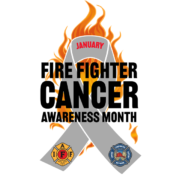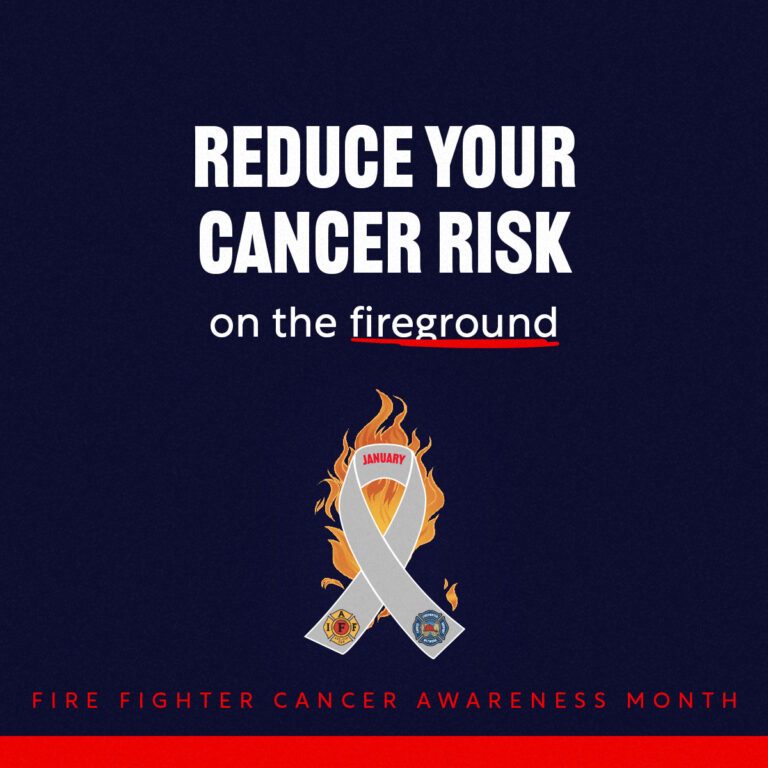FIREFIGHTER CANCER AWARENESS MONTH
Fire fighters are occupationally exposed to combustion byproducts while operating in various fire settings. These may include modern residential, commercial, vehicle, wildland, and other fires that contain many hazardous substances and increase the risk of fire fighters being exposed to these toxic chemicals.
There are a few best practices to reduce cancer on the fireground, but the best way to reduce your exposures on the fireground is to wear your self-contained breathing apparatus (SCBA) from the start of suppression through overhaul. Fire investigators, if possible, should also wear their SCBA. It is the gold standard for respiratory protection.
Designate Zones on the Fireground
To reduce these exposures, similar to exposure zones in fire stations, it is recommended to establish hot, warm, and cold zones on the fireground. Creating and managing these three zones can help reduce exposure to carcinogens during fire responses.
Hot Zone: Immediate Perimeter of Any Fire
There are a few best practices to reduce cancer on the fireground, but the best way to reduce your exposures on the fireground is to wear your self-contained breathing apparatus (SCBA) from the start of suppression through overhaul. Fire investigators, if possible, should also wear their SCBA. It is the gold standard for respiratory protection.
Warm Zone: Transition Zone
The warm zone is the area between the hot zone and the cold zone. This area is not in the immediate perimeter of any fire or products of combustion. Preliminary exposure reduction (PER) occurs in the warm zone, where personnel should be using SCBA and be on-air. The warm zone also serves as the drop zone for doffing/dropping of equipment prior to entering rehab or bagging contaminated PPE and equipment. Nourishment should not occur in the warm zone in order to decrease ingestion of carcinogens.
Cold Zone: Non-Hazardous Area
The cold zone is any area outside of the hot and warm zones. It is also the control zone of an incident that contains the command post and other support functions as deemed necessary. The cold zone will ideally be located uphill and upwind from the fire scene. Rehabilitation or rehab should be located in the cold zone. Nourishment should occur in the rehabilitation area or the cold zone.
Preliminary Exposure Reduction and Bagging Gear
- Preliminary exposure reduction (PER) reduces polycyclic aromatic hydrocarbons (PAH’s) by 85% on PPE and equipment. PER also drastically decreases a firefighter’s exposure to contaminants on their gear and equipment that may continue to off-gas or may become airborne as you travel back to the station.
- Anyone, including fire investigators, who are exposed to products of combustion need to go through PER.
- Prior to doffing firefighting gear, PER should be performed to remove potentially harmful contaminants, which is outlined in NFPA 1500 and 1851.
- Wet wipes should be used to wipe all areas of exposed skin.
- Tools and equipment should be cleaned at the scene.


